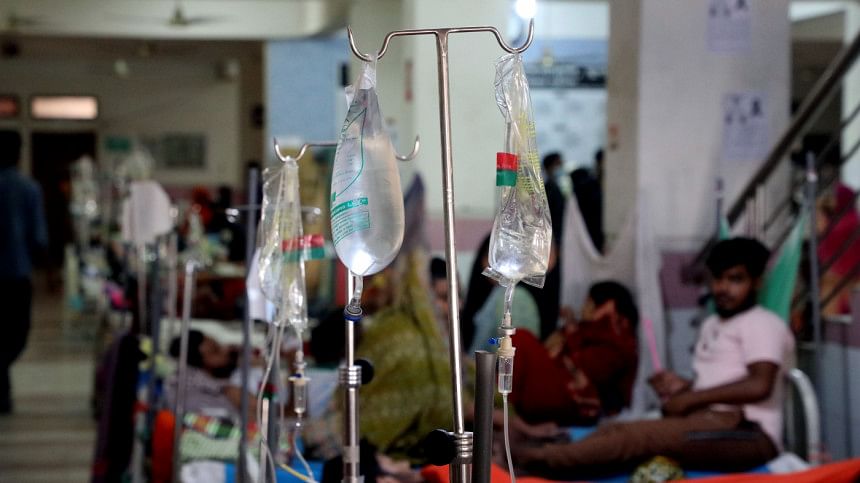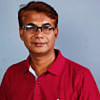2 grim milestones in one day

Twenty-four dengue patients died in the last 24 hours till 8:00am yesterday, the highest number of single-day casualties from the mosquito-borne disease in the country, taking the death toll past the 1,500-mark this year.
The number of deaths is 0.5 percent of total infections this year, which shows a grim picture.
Optimising primary healthcare centres for treatment and utilising medical colleges for critical cases could significantly reduce fatalities.
According to the Directorate General of Health Services, at least 1,623 dengue patients were hospitalised across the country yesterday, raising the total number of cases to 2,96,665.
Among the 1,500 deaths this year, 868 are females and 652 males.
Death toll was the highest for patients aged between 36 and 40 years, as 10 percent of the casualties belonged to this age group.
Addressing the spike in dengue-related deaths this year, public health expert Mushtaq Hossain emphasised the failure to break away from traditional health management approaches.
According to Hossain, optimising primary healthcare centres for treatment and utilising medical colleges for critical cases could significantly reduce fatalities.
"The medical colleges are currently overwhelmed with both critical and normal dengue patients. Many patients are being treated on floors. It becomes difficult for even highly skilled nurses and doctors to provide quality treatment in this situation," he said.
"Rural medical facilities and primary health care centres should be well equipped to treat dengue patients," he added.
He said there is a shortage of primary and secondary healthcare centres in Dhaka.
He warned that this issue extends beyond dengue, potentially leading to increased deaths from various communicable diseases.
HM Nazmul Ahsan, associate professor at Shaheed Suhrawardy Medical College Hospital, said there are multiple reasons for the high rate of dengue deaths this year, including virus, patient, and management-related factors.
Of the four types of dengue strains, the Den-2 serotype is mostly active this year and has a high severity. This is a reason for so many deaths this year, he said.
Around 87 percent of the patients were infected with serotype 2, according to a recent study of Bangladesh Shishu Hospital and Institute on dengue serotypes, Nazmul said.
"Serotype sequence is another factor. If a patient who was infected with one serotype earlier gets infected again with a new serotype, then its severity will be more, especially if the second infection is from serotype-2," he said.
"Serotype-2 was present in Bangladesh in 2017 and 2018 too, but the death rate was not high at that time. We are assuming that there are sub-serotypes of the Den-2 sequence that can be more severe and may be active this year."
"The high infection rate among vulnerable groups, including the elderly, infants, obese individuals, pregnant women, and those with comorbidities such as diabetes, high blood pressure, heart, kidney, lung, and liver issues, is another contributing factor," said Nazmul.
Also, many patients are coming to the hospital late with shock syndrome, which is another factor for the high number of deaths this year, he said.
"This year, we are observing many patients going into shock syndrome within two or three days, which is unusual."
"Many patients are coming from outside of Dhaka, he said.
"It takes several hours for a patient to reach the capital, during which they don't get enough fluids. Thus, many patients collapse even before they are admitted to hospitals," Nazmul mentioned.
He advised the authorities to improve dengue management systems outside the capital to lower casualties.
He said many private hospitals or clinics do not follow national guidelines in their dengue treatment.

 For all latest news, follow The Daily Star's Google News channel.
For all latest news, follow The Daily Star's Google News channel. 



Comments